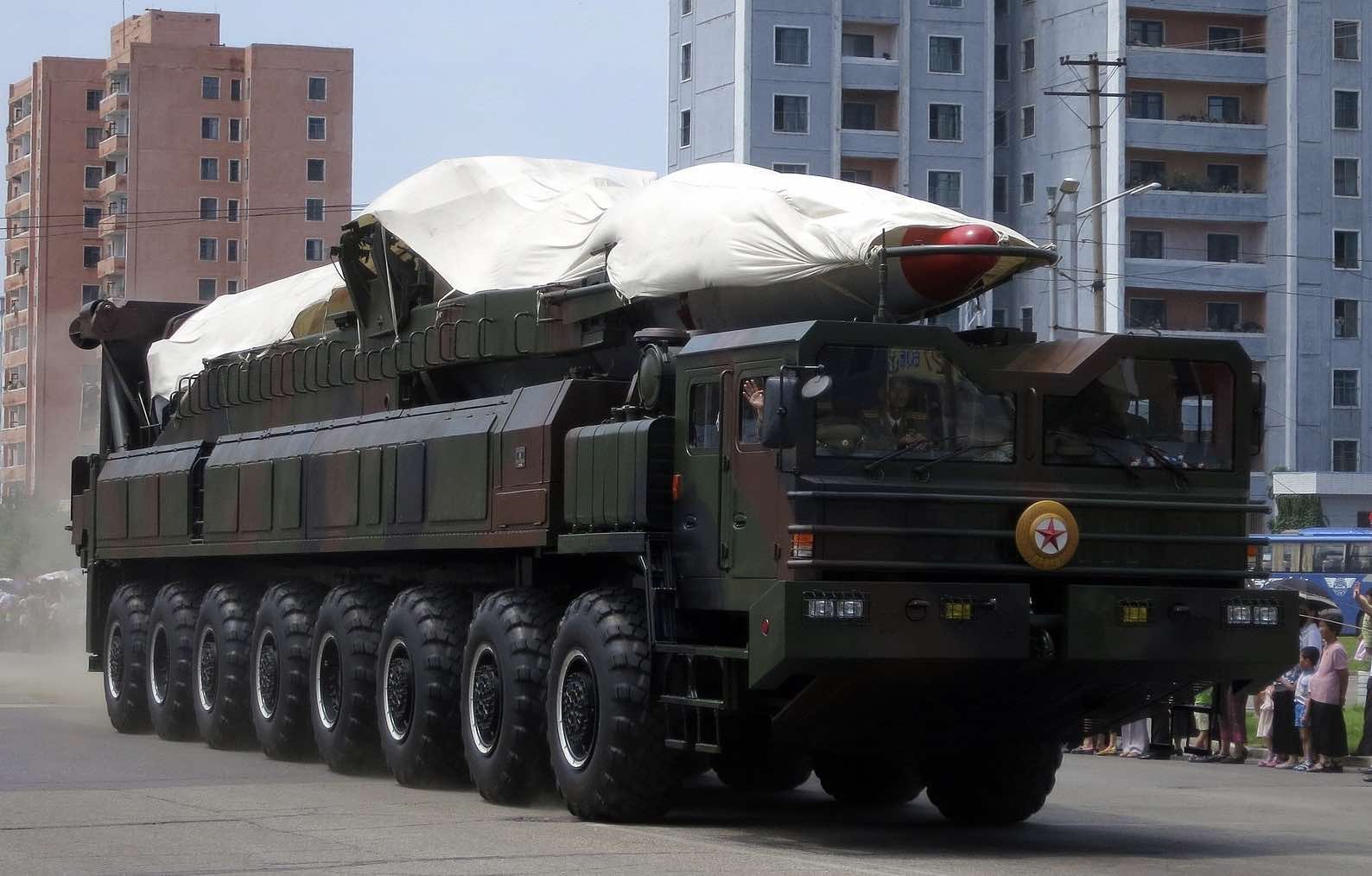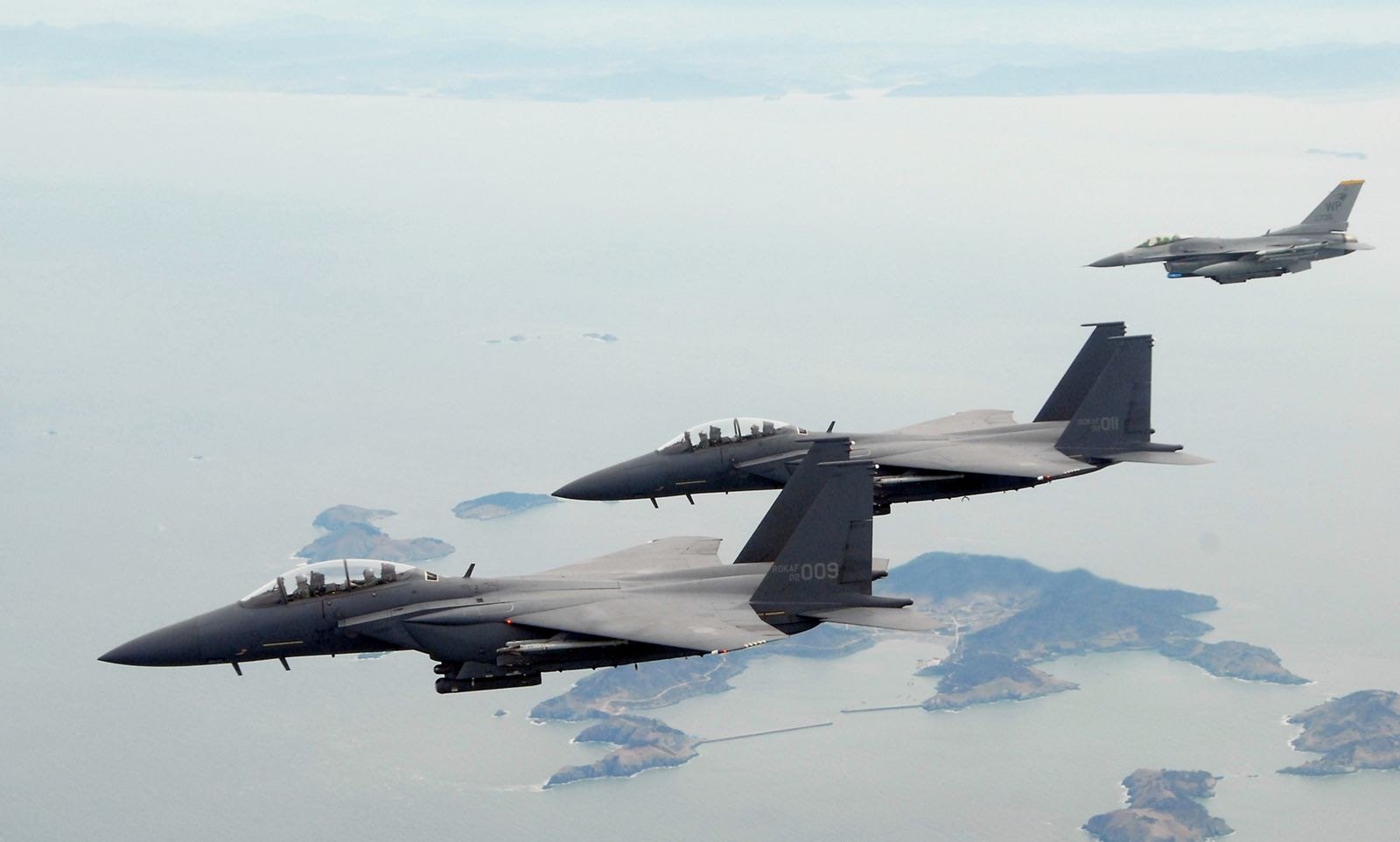

Welcome to this week’s installment of The Intelligence Brief… with the recent display by North Korea of its weapons capabilities in a record-breaking missile barrage, this week we’ll be looking at events leading up to the provocative launches, and what it means in terms of the country’s expanding capabilities. Items in our analysis will include 1) what we’ve learned about North Korea’s missile launches in recent days, 2) the joint U.S. and South Korean military training that preceded North Korea’s actions, 3) the latest intelligence on the suspected failure of an ICBM the country launched toward the Japanese mainland, and 4) what this all says about North Korea’s weapons capabilities.
Quote of the Week
“It’s very certain that North Korea is developing nuclear weapons for offensive purposes. They don’t need nuclear weapons to defend their own country.”
– Kim Young-sam
Before we get into this week’s analysis, a few of the stories The Debrief has been covering in recent days include how astronomers believe they may have discovered a long-rumored space object possessing unusual stellar qualities. Elsewhere, researchers from around the world recently gathered in France to discuss the best data and technical analyses involving unidentified aerial phenomena (UAP). Finally, in a story that is certain not to ruffle any physicist’s feathers, new discoveries by a team of astrophysicists are pointing to revelations that could challenge Newton’s Law of Universal Gravitation.
Meanwhile in video news, premiering this Friday on Rebelliously Curious with Chrissy Newton is a discussion with Faheem Hussain, Assistant Professor with the School for the Future of Innovation in Society, who will be discussing his research and interest regarding the “digital afterlife,” and how he thinks the prospect of living on indefinitely through technology impacts religion and culture in the global sense of things. You can find all past episodes of Rebelliously Curious and other video content over on our YouTube Channel.
And with that, it’s time for us to dive into the recent launch of nearly two-dozen missiles by North Korea, and what their recent provocations mean for South Korea, the United States, and its allies around the world going forward.
The 2022 North Korean Missile Storm
On Wednesday, North Korea launched an unprecedented barrage of missiles into the sea border area between it and South Korea, resulting in air raid sirens and evacuations on a South Korean island close to where one of the projectiles reportedly landed.
Yesterday, The Debrief reported that North Korea had warned just prior to the launch that South Korea and the United States, who are currently engaged in joint military exercises, would “pay the most horrible price in history” if what the country claims to be preparation for an invasion by its rivals to the south and the U.S. continue.


With a total of 23 missiles fired on Wednesday, it is believed that North Korea’s provocative display marks the greatest number of projectile test launches within a single day ever conducted by the country. However, as new details about the country’s actions come to light, along with intelligence reports that reveal a key failure involving a suspected ICBM launch that followed Wednesday’s missile storm, a look at the timeline leading up to this week’s explosive turn of events is warranted.
Vigilant Storm
On Monday, October 31, the Republic of Korea Air Force (ROKAF) joined the Seventh Air Force of the United States Pacific Air Forces and other U.S. units in a large-scale training event that is currently scheduled to last until Friday, November 4.
Formerly designated the Combined Flying Training Event (CFTE), this year the annual event was renamed Vigilant Storm, with the stated purpose of enhancing “combat readiness and interoperability for all units involved,” with a specific focus on units throughout the Korean peninsula, according to an official statement from the U.S. Indo-Pacific Command (USINDOPACCOM).


“This year’s event will strengthen the operational and tactical capabilities of combined air operations and enhance our strong combined defense posture,” the statement read, adding that an estimated 240 aircraft, along with thousands of ROK Air Force, USAF, U.S. Marine Corps, U.S. Navy, and U.S. Army personnel will be participating, and the deployment of a KC-30A air refueler belonging to the Royal Australian Air Force’s 33 Squadron, which was also sent to the Republic of Korea for inclusion with the event.
“ROK and U.S. Air Forces will work together with the joint services to perform major air missions such as close air support, defensive counter air, and emergency air operations 24 hours a day during the training period,” the USINDOPACCOM statement read. “Support forces on the ground will also train their base defense procedures and survivability in case of attack.”
Rain of Fire
As training began, North Korea’s Foreign Ministry was quick to protest the exercises, alleging that the United States’ expansion of military exercises with South Korea was tantamount to practice for an eventual attack. Following the issuance of its criticisms against the U.S., North Korea began launching a variety of missiles in its arsenal into coastal waters off the east and west coasts of the Korean peninsula.
Among the projectiles launched on Wednesday had been surface-to-air missiles and short-range ballistic missiles, one of which reportedly landed near South Korea’s Ulleung island, prompting evacuations in the vicinity. South Korea was quick to respond by launching missiles of its own into the oceanic buffer zone created to ease tensions between the countries.


North Korea’s provocations didn’t stop with Wednesday’s record-breaking launches, however. Early on Thursday, additional ballistic missile launches accompanied what is now suspected to have been a failed intercontinental ballistic missile (ICBM) launch that prompted alerts in regions of central and northern Japan.
Although initial reports had indicated the flight path of the ICBM brought the missile over the Japanese mainland, a statement by Japanese Defense Minister Yasukazu Hamada later clarified that the military lost track of the object as it passed over the Sea of Japan, seemingly indicating the ICBM’s failure. Debris from the failed missile, still traveling at high speed, may have passed over Japan even after the device is suspected to have failed, according to Retired Vice Admiral Yoji Koda, a former fleet commander with the Japan Maritime Self Defense Force.
Assessing North Korea’s Capabilities
Wednesday’s record number of launches, along with the failed ICBM on Thursday, brings North Korea’s total number of launches in 2022 up to more than 60.
Although Thursday’s ICBM launch appears to have failed, earlier this year in March, the country claims to have successfully tested its largest ICBM to date, the Hwasong-17. However, U.S. and South Korean officials have said that some reports indicated the missile fired during the test launch had actually been an earlier variety, the Hwasong-15, and that there was no intelligence indicating that tests involving the Hwasong-17 had actually succeeded.
Fundamentally, North Korea’s penchant for firing long-range missiles in recent days demonstrates both the country’s growing weapons capabilities, along with the continuance of its long-held conviction that such abilities are a necessary defense against the United States, which it has long perceived as an aggressor. Add to this the growing concerns over North Korean nuclear tests and its purported covert facilitation of munitions to aid Russia in its invasion of Ukraine, both of which further emphasize the kinds of issues that North Korea continues to represent for its neighbors to the South, as well as the U.S. and its allies.


Condemning the launches and announcing that Vigilant Storm would now be extended beyond Friday, the U.S. was quick to respond to North Korea’s recent missile launches. In a statement issued Wednesday by U.S. Department of State spokesman Ned Price, North Korea’s actions represent “a clear violation of multiple United Nations Security Council resolutions and demonstrate the threat the DPRK’s unlawful weapons of mass destruction and ballistic missile programs pose to its neighbors, the region, international peace and security, and the global non-proliferation regime.”
“This action underscores the need for all countries to fully implement DPRK related UN Security Council resolutions,” Price said, adding that the U.S. and its allies “call on the DPRK to refrain from further provocations and engage in sustained and substantive dialogue.”
“Our commitments to the defense of the Republic of Korea and Japan remain ironclad,” the statement concluded.
That wraps up this week’s installment of The Intelligence Brief. You can read past editions of The Intelligence Brief at our website, or if you found this installment online, don’t forget to subscribe and get future email editions from us here. Also, if you have a tip or other information you’d like to send along directly to me, you can email me at micah [@] thedebrief [dot] org, or Tweet at me @MicahHanks.


Here are the top stories we’re covering right now…
- North Korea Launches Record-Breaking Barrage of Missiles, Prompting Air Raid Alert and Evacuations
North Korea reportedly fired almost two dozen missiles early on Wednesday, prompting evacuations to underground shelter facilities on South Korea’s Ulleung island.
- When It Comes to Interstellar Travel, There Are Both Hazards and Benefits
There will be both good and bad for any future earthlings or technologies of our design that may engage in interstellar travel.
- “Quantum Watch” Helps Physicists Reveal a Completely New Way to Measure Time
An international team of physicists says it has discovered a new way to measure time, in a research effort that led to the creation of a kind of “quantum watch.”
- Existence of Long-Rumored ‘Strange Star’ Made of Weird Matter May Finally Be Confirmed
Composed entirely of strange “quark matter,” astronomers believe they may have discovered a long-rumored space object possessing unusual stellar qualities.
- The Arrow of Cosmic Time: From Simplicity to Complexity and Back
During a recent lecture at the University of Michigan that I gave, I was asked why the arrow of cosmic time is characterized by a transition from simplicity to complexity.
- Newton’s Law of Universal Gravitation is Challenged by Controversial New Astrophysics Discovery
New discoveries by a team of astrophysicists are pointing to revelations that could challenge Newton’s Law of Universal Gravitation.
- The French Government’s Space Agency Just Hosted an International Conference on UAP
Researchers from around the world recently gathered in France to discuss the best data and technical analyses involving unidentified aerial phenomena (UAP).
- NASA UAP Study Update: Team Members Assemble as Study Officially Goes Underway
With NASA’s UAP study now underway, in recent days we learned who the space agency has selected to collect and study data related to the phenomenon.
- Solar Flares Might Actually Increase Habitability of Trappist-1 Exoplanets
A new study claims solar flares may actually make the planets in Trappist-1’s habitability zone even more habitable than first thought. Teams using the James Webb Space Telescope are planning to search those same planets for chemical traces of extraterrestrial life, called ‘biosignatures,’ in their atmospheres.